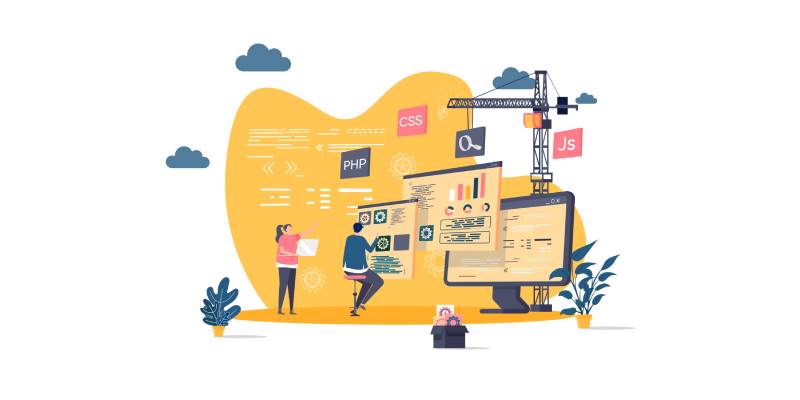I’m not exactly a handyman, but like anyone working around a home and yard, I appreciate good tools. One of the things I like most about a particular brand of power tools I use is that each of them can be powered by the same rechargeable battery – the hand drill, the leaf blower, the hedge trimmer, the lawn mower, and so on. What I like about this set-up is that I don’t have to worry about charging a half-dozen different batteries; if I’ve got one in use and one charging, I’m pretty much good to go. The good news is, this kind of powerful (no pun intended) simplicity is coming to the HRIS/talent acquisition (TA) space. Talent acquisition solution is evolving.
Point solutions use different batteries …
One of the biggest challenges with today’s HRIS/TA tech stack is that many companies have cobbled together a lot of point solutions. Their stack creep is a product of the HR analytics and process automation boomlets we’ve seen among larger-scale Big Data and AI trends that have driven enterprise software over the last decade.
Many innovative TA solutions popped up that companies found irresistible – but the problem is, none of the components in the stack use the same battery, which I’ll define as a common data set and fluid data sharing. These solutions typically communicate OK enough with the HRIS through a data pipeline and application programming interface (API), but the APIs enabling the various apps to communicate with each other are high-maintenance, and typically don’t work very well for very long.
This is a real problem for TA processes that require point-to-point coordination. Disconnected systems (e.g., powered by different batteries) can prevent teams from effectively communicating and create data flow roadblocks. They are rarely configurable or flexible enough to deal with the fast-paced change of real-world recruiting. And the worst part is, poorly connected point solutions create bottlenecks and a disjointed experience for your candidates.
… While platforms remain monolithic and inflexible
On the other end of the spectrum are the “all-in-one” solutions from large HR software companies – you know the ones, the companies that have been in business since client/server technology was the tech industry’s Next Big Thing. These companies tout their full technology stacks, but the reality is, these platforms have typically grown through bolted-on additions of acquired functionality.
In other words, these all-in-one solutions often function as poorly as one-off best-of-breed environments that companies stitch together on their own. They still lack the battery – the common data set and fluid data sharing – a smooth TA process requires.
From features and benefits, to insights about the future of AI in the world of recruitment, we’ve got it all.
Wondering How AI Can Help You Rock Your Talent Acquisition Goals?
How to charge the battery
Here are four things you should consider when thinking about your talent acquisition process, and the tools and technology you use to get, and charge, the battery needed for a high-powered TA operation.
- Do all of the solutions connect seamlessly, and allow upstream and downstream data flow?
If the tools don’t easily connect, candidate data ends up in multiple places. This information is then scattered across your talent acquisition team, making communication and reporting difficult.
- If the battery changes in one TA tool, you may have to review the battery power for all the tools.
Changes in one of your TA tools might require costly customizations in other parts of your TA process to keep it all running smoothly. Again, at my house, each power tool I use performs an isolated job, but because they all use the same battery I can move from task to task seamlessly. This is rarely the case when you are using multiple TA solutions, each is designed for a specific business need.
- Be wary of platform solutions that are stacked point-to-point solutions.
The biggest issue with HRIS players’ platforms is that it’s very tough for them to keep up with marketplace demands. The constantly changing TA landscape can make overall platform upgrades a nightmare, between managing version control and constant updates to the end user experience. A true, battery-powered TA platform will be able to demonstrate end-user consistency, adaptability, continued ease of integration, and flexibility to change with your business and staffing needs.
- Point-to-point solutions often don’t give you a full line of sight.
With a point-to-point TA solution, each component often works independently, instead of as components in orchestrated process flows. This carries two big risk factors:
- It can be difficult to isolate problems and determine root causes, which in turn can stymie resolution.
- Once an issue is identified, found and resolved in one point application, it may require upgrades and fixes in others, triggering what often seems like a never-ending cycle.
As I have blogged about previously – today’s job seeker is looking for ease of application, seamless communication, and a process entirely geared to them – you can see how point-to-point environments do little to help, and a lot to hinder, HR organizations’ progress toward this elusive goal. But … there’s still hope!
Let’s continue the conversation. Share my blog and tag Joveo on LinkedIn or Twitter. And, request a demo today to see how Joveo can help you get the most out of your recruitment advertising.














